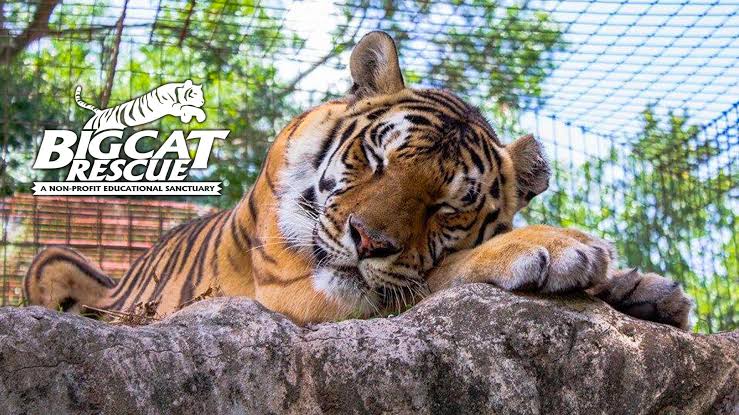Wild cats are a group of feline species that are found in the wild. There are many different types of wild cats, ranging in size from small to large. Here are some general facts about wild cats:
Types of wild cats: Some examples of wild cats include lions, tigers, leopards, cheetahs, jaguars, cougars, lynx, and bobcats.
Habitat: Wild cats can be found in a variety of habitats, including forests, grasslands, deserts, and mountains.
Diet: Wild cats are carnivores, and they primarily hunt for prey such as deer, antelopes, and smaller mammals like rodents.
Behavior: Wild cats are solitary animals, and they typically hunt and live alone. However, some species, such as lions, live in prides or groups.
Physical characteristics: Wild cats vary in size, but they all have some common physical characteristics, such as sharp claws and teeth, keen senses, and a muscular build.
Conservation: Many wild cat species are threatened or endangered due to habitat loss, poaching, and other human activities. Conservation efforts are underway to protect these species and their habitats.
Mythology and culture: Wild cats have played important roles in mythology and culture throughout history. For example, the lion is often depicted as a symbol of power and strength, and the tiger is revered in many cultures for its beauty and grace.
In addition , wild cats are fascinating animals with unique characteristics and behaviors. While they may be fearsome predators, they also play important roles in maintaining the ecological balance of their habitats.
Read Also: Health Benefits and Uses of Zobo Leaves
Wild Cat Rescue

Here are some steps that are typically involved in wild cat rescue:
Assess the situation: The first step in wild cat rescue is to assess the situation and determine the best course of action. If the cat is injured or in danger, it may need immediate attention.
Contact the authorities: If the wild cat is in a public area, it is important to contact the local wildlife authorities to ensure that proper permits are obtained and that the rescue is carried out safely and legally.
Capture the cat: Capturing a wild cat can be dangerous and should only be attempted by experienced individuals. Techniques such as using traps or sedation may be used to safely capture the cat.
Transport the cat: Once the cat has been captured, it should be transported to a wildlife rehabilitation center or animal rescue organization that has experience with wild cats. It is important to ensure that the cat is transported safely and securely.
Provide care: Wild cats require specialized care that may include medical treatment, rehabilitation, and training to prepare them for release back into the wild.
Release the cat: Once the cat has fully recovered and is ready for release, it should be released back into its natural habitat.
Wild cat rescue can be a challenging and rewarding endeavor. It requires specialized knowledge and experience to ensure that the cat is treated safely and responsibly. However, by working together, we can help protect and preserve these magnificent animals for future generations.
Types of Wild Cat Rescue

Capture and Release: This is a method of capturing wild cats that involves using humane traps or nets to capture the animal, followed by assessment and treatment by trained professionals. Once the cat is healthy and ready, it is released back into the wild.
Medical Treatment: Injured wild cats may require medical treatment, such as antibiotics, surgery, or physical therapy. Veterinarians or wildlife rehabilitation professionals may be involved in providing medical care to injured wild cats.
Behavioral Training: Wild cats that have been rescued may require behavioral training to prepare them for release back into the wild. This may involve teaching them to hunt, avoid predators, and find shelter.
Orphan Care: In some cases, wild cat kittens may be orphaned or abandoned. Specialized care is required to feed, nurture, and socialize these kittens until they are ready for release back into the wild.
Habitat Restoration: In addition to direct rescue efforts, restoring and preserving natural habitats is also a critical component of wild cat rescue. This may involve efforts to protect habitats from destruction or degradation, such as deforestation or pollution.
It’s important to note that wild cat rescue and rehabilitation should only be carried out by trained professionals with the proper permits and equipment. Handling wild cats can be dangerous and should only be attempted by those with the proper training and experience.
Read Also: Guide on Olive Oil Processing, Health Benefits and Uses
Importance of Wild Cat Rescue
Conservation: Many wild cat species are threatened or endangered due to habitat loss, poaching, and other human activities. By rescuing and rehabilitating injured or orphaned wild cats, we can help to protect and conserve these species.
Ecological balance: Wild cats play important roles in maintaining the ecological balance of their habitats. By rescuing and releasing them back into the wild, we can help to restore and maintain these ecosystems.
Education: Wild cat rescue can provide opportunities for education and outreach, helping to raise awareness about the importance of conservation and the need to protect these animals and their habitats.
Compassion: Wild cat rescue allows us to show compassion for animals that are in need of help. By caring for these animals and working to ensure their well-being, we can demonstrate our respect and appreciation for the natural world.
However, wild cat rescue is an important part of conservation and protection efforts. By working together to rescue and care for wild cats, we can help to ensure the survival of these magnificent animals for generations to come.
Where to Find Wild Cat Rescue near Me/You

Online search: A simple online search using keywords such as “wild cat rescue” or “wildlife rehabilitation center” can help you find organizations in your area.
Local animal shelters: Local animal shelters may have information about wild cat rescue organizations in your area.
Wildlife authorities: Contacting your local wildlife authorities can provide information about licensed wild cat rescue organizations in your region.
Animal rescue networks: Animal rescue networks and social media groups can provide information about wild cat rescue organizations and volunteer opportunities.
National and international organizations: National and international organizations such as the World Wildlife Fund (WWF) or the International Fund for Animal Welfare (IFAW) may have information about wild cat rescue organizations in different regions of the world.
It is important to note that rescuing and caring for wild cats should only be done by experienced individuals and organizations with the proper permits and training. Always contact a licensed organization or wildlife authority for assistance with wild cat rescue.
Read Also: What You Should Know Before Buying a Farm
